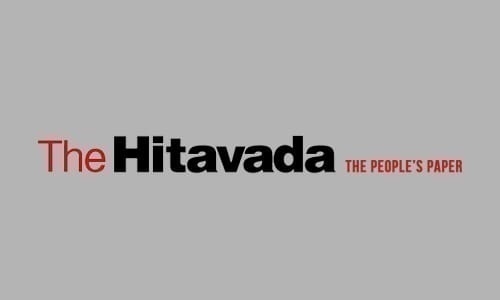Who will tell our youth the real story of thestruggle for freedom ?
| Date :24-Mar-2024 |

Loud Thinking - Vijay Phanshikar
THE names are, of course, familiar to most young people -- Bhagat Singh, Sukhdev, Rajguru -- as heroes of the armed part of India’s struggle for Independence. But beyond a perfunctory awareness about the threesome, young people do not know about the revolutionaries without whose mention the history of the struggle for Independence cannot be written. This is very
saddening.
The loud-thinker spent quite some time talking to several young people -- boys and girls -- between ages 15 and 25 years -- and felt terribly disappointed with the responses he collected about the contribution of Bhagat Singh, Sukhdev and Rajguru or their revolutionary organisation that made life hell for the British Government in India. This experience only endorsed what the loud-thinker was already aware of -- young people’s apathy towards the armed struggle which the revolutionaries put up with extraordinary courage and conviction underlining that they must not accept or tolerate the British rule in any form. Countless numbers of revolutionaries lived life in darkness, daring the British police and shocking the alien rulers with their brave and smart acts.
Despite this, a good number of young people have only a superficial introduction to the revolutionaries and their dedication. They do know a few songs and poems about the revolutionaries, all right.
But beyond those, there is only a perfunctory awareness about what the revolutionaries did and how and under what circumstances.
The young people also are not fully aware about the tremendous contribution of Swatantryaveer Vinayak Damodar Savarkar to the armed struggle against
the British or the books he wrote or how his silent
leadership triggered two
daring attempts to free the country from the British rule -- the Ghadar Party action from the West around the time of World War I, and the Indian National Army led by Netaji Subhas Chandra Bose during the World War II. Many young people do know tidbits about the armed struggle, but many young faces appear almost fully blank.
BUT then, it is futile to blame only young people in this regard. For, when the loud-thinker probes deeper about how detailed is the awareness of older people -- say in their fifties and sixties -- he realises that their information levels, too, are quite low. Many of them talk disinterestedly about the armed part of the struggle for Independence.
Obviously, the problem is with our schools and homes where the story of armed struggle is not told at all -- let alone the poetic part of that unequal fight the revolutionaries put up against the British.
Why does this happen? Is it probably because our present-day Indian society does not feel any spiritual need to keep the connect with that part of our history intact? Is it because there are forces working quietly to discourage us from delving deeper into the details of the armed struggle?
This brings to making an old point once again -- about the need to make conscious attempts to retell the story of India’s struggle for Independence (armed and unarmed) through school books and through other media including the electronic and digital ones. This will serve a major spiritual need of our society in the
long run.
The loud-thinker only hopes that there is somebody listening.